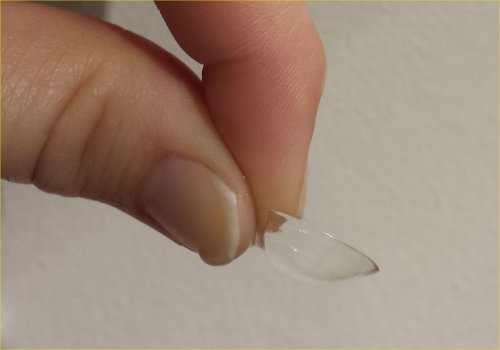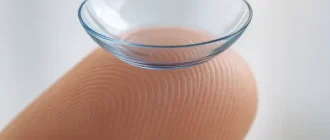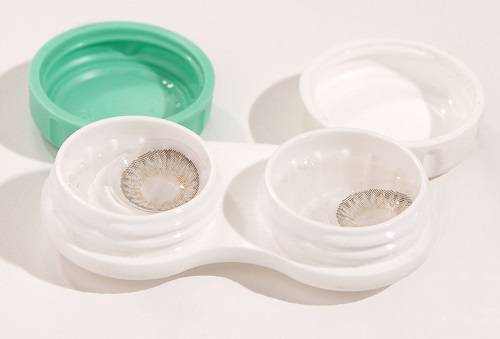Soft contact lenses are made from hydrophilic plastics – a type of plastic that absorbs water and stays flexible.
This means that they need to stay moist inside your eyes or in a case. If they dry out, they become brittle and may even break.
How to clean your lenses

After taking out your lenses from the eye, gently rub them with your recommended solution to remove any debris or dirt. Then rinse them with a little more solution before putting them in their case and closing it.
Hydrogen peroxide solution is a popular choice for cleaning and disinfecting your soft contacts. It should be used with a neutralising tablet to convert the hydrogen solution into water (so it won’t sting your eyes) before being added to the lens case.
If you’re unsure of how to use your chosen cleaning system, ask your eye doctor. They’ll be able to help you choose the right one for your particular type of contact lenses. They’ll also be able to explain how to store them and clean them properly. So you can get the most out of your lenses!
How to disinfect your lenses
Taking good care of your soft contact lenses is essential to ensure they remain comfortable and infection-free. Your eye doctor will provide you with specific instructions for cleaning, disinfecting and storing your lenses.
Before handling your contact lenses, wash your hands thoroughly with antibacterial soap. Avoid using moisturizing soaps that can leave a residue on your hands that can transfer to your contacts and irritate your eyes.
Then, place one lens in the palm of your hand and rub it back and forth (not circularly). This process removes deposits and micro-organisms on the surface of your contact lenses that could cause infections.
Next, rinse the lens with the recommended solution for a specified amount of time. Studies have shown that rinsing with a multipurpose solution is more effective at eliminating deposits than rubbing with a “no-rub” product.
If you have significant protein build-up, you may also need to use a daily cleaner in addition to a multipurpose or hydrogen peroxide solution. Your doctor can recommend these products, which are available in liquid or tablet form.
How to store your lenses
Soft contact lenses require a different regime to hard lenses. They are replaced less frequently (years rather than months) so they need to be disinfected and stored properly in order to remain safe.
There are many different solutions available, and it’s important to talk with your eye care professional about which systems are best for you. They’ll help you choose a solution that is suitable for storage, and will be able to provide information on how to store them.
Most soft contact lens wearers choose to use multipurpose solutions, which are ideal for cleaning, rinsing, disinfecting and storing their lenses. These types of solutions are easy to use and come in bottles that have a built-in case for storage.
Some people also choose to use hydrogen peroxide solutions to clean, disinfect and store their contacts. These types of solutions are preservative-free and will not contaminate the contacts themselves.
How to replace your contact lens solution
When it’s time to replace your contact lens solution, make sure you buy high-quality products from well-known manufacturers. This will protect your eyes from eye infections and keep your lenses clean and comfortable.
Use a solution that is appropriate for your type of soft contact lens. If you’re not sure, ask your doctor.
You’ll find a variety of contact lens solutions on the market, from multipurpose solutions to hydrogen peroxide-based systems. Be sure to follow the manufacturer’s instructions and take note of product warnings.
Rinse your hands with antibacterial soap to avoid transferring germs and dirt onto your lens. Dry your hands with a lint-free towel.
Put your lenses in the clean storage case. Be sure to fill each well of the case with solution.
If your case has a neutralizing disk, place the contact lenses in it and allow them to soak for at least six hours before inserting them. This allows the hydrogen peroxide to neutralize and convert to saline.





